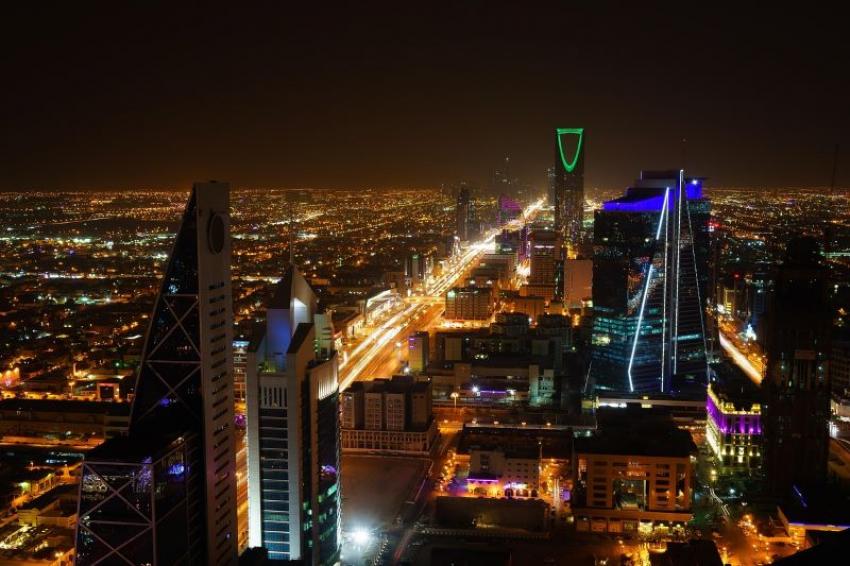NITN | @notintownlive | 18 Nov 2024, 08:50 am
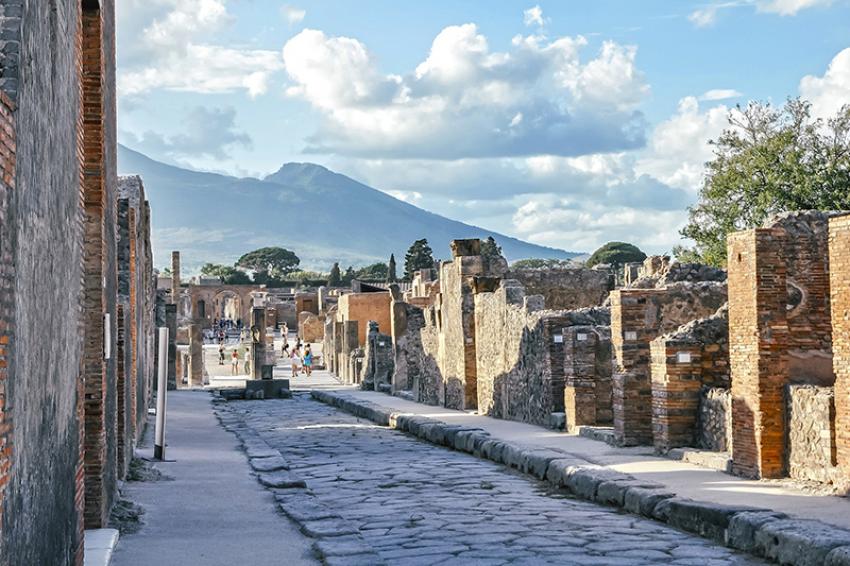 Pompeii
Pompeii
The Vesuvius street of Pompeii. Photo courtesy: Duotone/Pixabay
In recent times areas around Naples have seen a flurry of activities as government agencies conduct drills to make citizens aware of a possible volcanic eruption. After all, Mount Vesuvius is not far from the city. It brings back memories to Ranjita Biswas of visiting the ruined city of Pompeii buried under the volcano’s ashes
In Japan, children are taught from school how to conduct themselves when an earthquake strikes, common in the country; in Naples, Italy, residents of late have been going through drills to face a similar disaster, but from eruptions of a volcano.
The notorious Mount Vesuvius, Europe’s most active volcano, is not far away. Apparently minor earthquakes, along with a measurable rise and subsidence of the earth, has picked up in recent years. Should it happen, it would stir quite a storm, literally, though at the moment it seems a remote possibility.
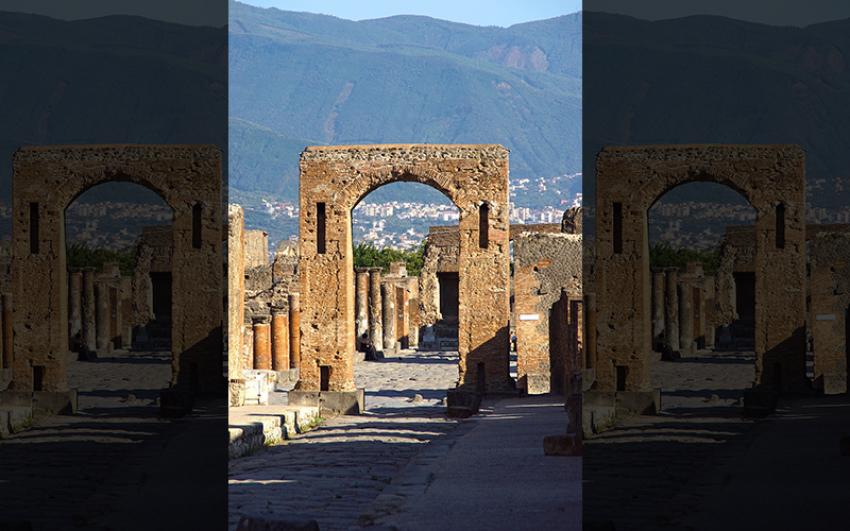 The ruins of Pompeii. Photo courtesy Pixabay
The ruins of Pompeii. Photo courtesy Pixabay
But the authorities are not taking the warning signs lightly. Since 2012, Italy’s national civil protection department has put Campi Flegrei- burning fields, (Phlegrean Fields in English) on a ‘yellow’ alert. Lying on the Gulf of Pozzuoli it is about four km from the centre of Naples. It sits on a volatile caldera, a land formation due to volcanic activities about 39,000 years ago.
While reading the report about these precautionary measures for Neapolitans, it brought back memories of my visit to the ruined city of Pompeii, buried under ashes of Mount Vesuvius in 79 AD. Naples, famed for being the original ‘home of the pizza’, also sees millions, apart from the epicureans, visiting annually to experience the nearby volcanic city.
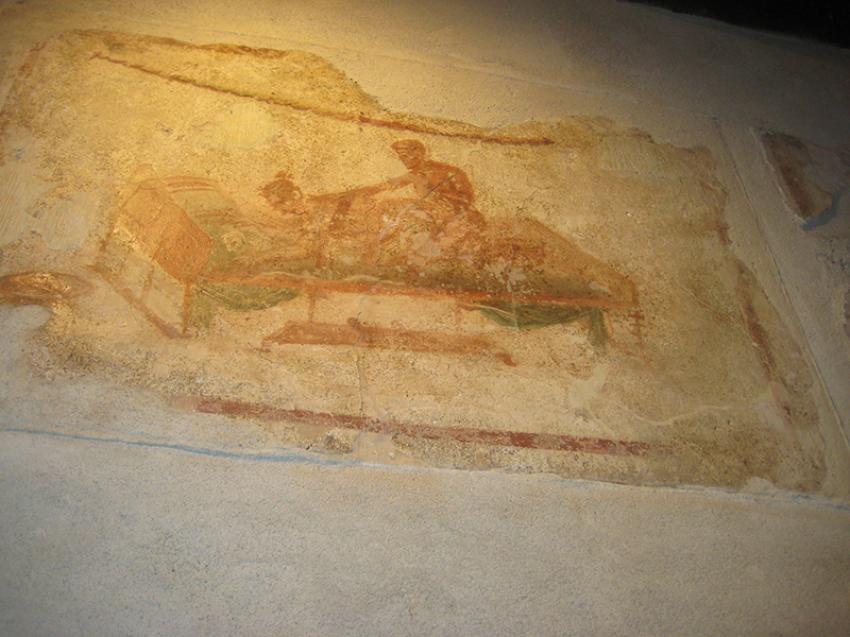 Painting on the wall. Photo by Ranjita Biswas
Painting on the wall. Photo by Ranjita Biswas
As the bus left behind Naples after our quick lunch, with what else, pizza! and drove towards that unfortunate city of yore from Roman times, I remembered the novel The Last Days of Pompeii. Written by Edward Bulwer-Lytton in 1834 which I had read in adolescence, it had made my imagination fly into the Roman times and now, it was where I was going now! I had to pinch myself to believe it.
On a hot August afternoon in 79 AD, the mountain erupted, spewing a river of ash and lapilli for two days and two nights straight, burying the city with its well laid lanes, shops, public baths, and people working at a potter wheel or taking naps. The accounts by Pliny the Younger, nephew of Pliny the Elder, who was in charge of the province of Pompeii, paints a picture of what had happened, people caught unaware in the spiralling gloom.
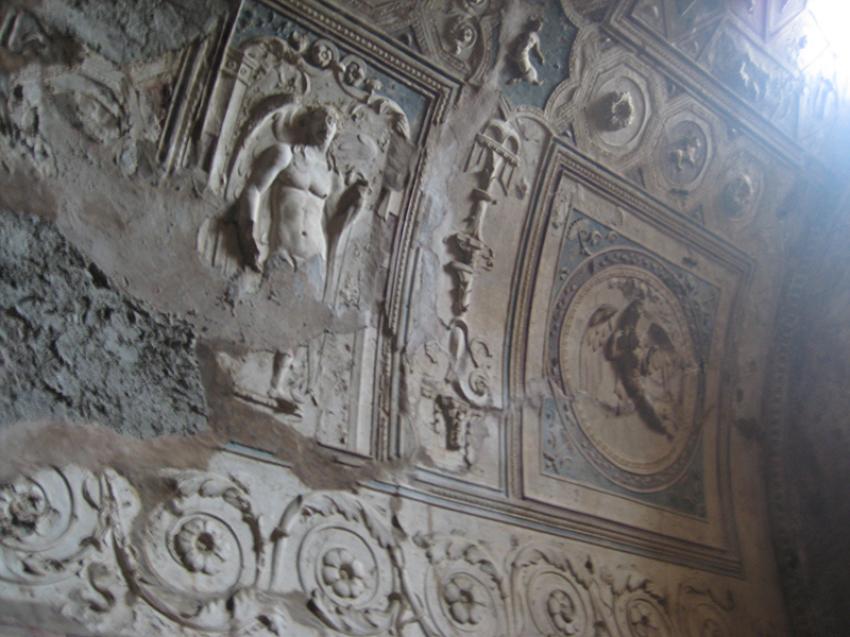 A wall decor. Photo by Ranjita Biswas
A wall decor. Photo by Ranjita Biswas
Pompeii remained buried, forgotten, perhaps a grist for folk tales and oral history, until architect Domenico Fontana, while carrying out a survey for land improvement in the Sarno Valley and building a tunnel came across some inscriptions. It led to an amphitheatre; but that a whole city lay buried underneath was unimaginable at that time.
The real excavation started in 1748 under Charles of Bourbon. In 1860, Italian archaeologist Giuseppe Fiorelli used an innovative method of pouring liquid plaster into the spaces left in the bed of ashes and let it harden to get a plaster cast of the corpses and other objects. And soon, as if by a magician’s wand, a city emerged, with houses, men and women at different postures, exquisite statues like that of Apollo and Faun, etc. It was as if Pompeii was resurrected, literally, from the ashes, to tell of a time more than two thousand years ago.
A UNESCO heritage site now, Pompeii is a city frozen in time. It gives a rare opportunity to witness the lifestyle of the Romans in the first century of the last Millennium. It was originally under the Greeks but became a Roman colony in 80 B.C. So the architecture displays influences of Greco-Roman style. It is one of the best preserved amphitheatres of its kind in Italy which could hold 20,000 spectators.
 A Pompeii street. Photo by Ranjita Biswas
A Pompeii street. Photo by Ranjita Biswas
As I looked on, I had the illusion that scenes from the movie Gladiator could come alive anytime with the warriors walking in to participate in the bloody sport for the enjoyment of the citizens.
Pompeii was surrounded by a three kilometre wall with eight gates. Near the Sarno Gate entrance is the amphitheatre. In fact, you can walk around the quarters where the gladiators stayed and practiced. There is also a large gymnasium opposite the amphitheatre.
As I walked through the ancient paths of the once-buried city, I saw that by modern standards the roads were narrow but well laid-out with footpaths. Some cobbled tracks still bear hoof marks of chariot horses.
The streets often overflowed with water and waste material so there were stone blocks for pedestrians to step onto. These stone blocks also served as speed breakers to make the carriages slow down and not run over the pedestrians. You’d also notice on the ground small tiles called ‘cat’s eyes’. The moon’s light or candle light reflected off these tiles and people could see where they were walking at night.
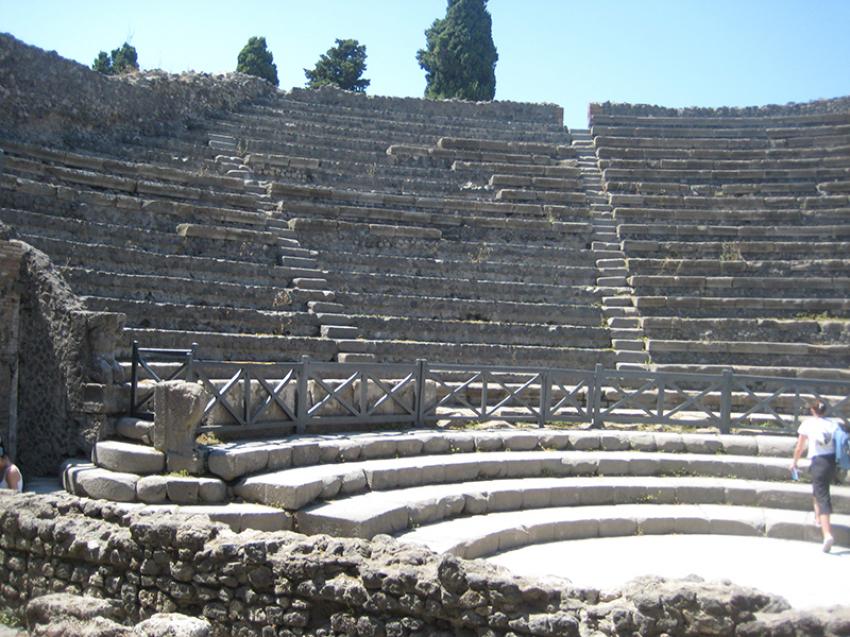 Pompeii Amphitheatre. Photo by Ranjita Biswas
Pompeii Amphitheatre. Photo by Ranjita Biswas
Meticulous planning also went into lay-outs of the living and trade quarters. The houses of the rich still bear remains of beautiful frescoes. The walls were covered with at least six layers of plaster and then painted. The huge hall where the fish and meat market was located shows faded paintings with fishmongers and a lively market scene.
On a narrow street leading to the centre you can peek into Lupanar, a cluster of rooms of the brothel. The walls still bear remains of erotic paintings. The bakeries’ ovens look similar to the old brick stone oven. At the ‘House of the Baker’ there is a garden with millstones of lava used for grinding the wheat.
Common people were mostly illiterate and sign language was used. So the ‘House of the Tragic Poet’ with the elaborate mosaic at the entrance depicts a chained dog, with the words Cave Canem meant ‘Beware of dogs’.
 Painting on the wall. Photo by Ranjita Biswas
Painting on the wall. Photo by Ranjita Biswas
The Forum, as in other Roman towns, was the center of public life. The Basilica next to it was surrounded by many of the important government, religious and business buildings. At the ‘Granary’ are remains of everyday life like amphorae (storage jars) and plaster casts of people who could not escape the eruption. It was an eerie experience to observe people at work frozen in action as the ash submerged them or at the ‘Garden of the Fugitives’ where groups of people lay, dying.
For nine hundred years Vesuvius had remained dormant before it came alive on 24 August that day in 79 AD. Experts say it may erupt again in the upcoming decades and it can even destroy nearby Naples. That people should not build houses near the bay. But then, who can say what would happen? On that note you leave behind Pompeii pondering on the fragility of life.
(Photos by author and Pixabay)
- From kebabs to biriyani: Lucknow gets UNESCO honour for its royal cuisine
- Delta takes Spanish flavours to the skies
- Kolkata’s iconic Kathi Roll among world’s top 10 wraps: TasteAtlas
- Yellow Taxis and the Colours of Puja
- Starbucks introduces special Durga Puja inspired menu for Kolkata, with an attractive discount offer too
- Rosé All Day and Coastal Vibes: Dining at Chicago's The Hampton Social – River North
- A taste of South India this Durga Puja at Garden Café in Kolkata
- Ireland promotes culinary tourism in Germany with new food campaign
- Karim’s Entally launches heritage menu reviving old Calcutta flavours
- Sleepless in Budapest
Starting Nov 16, 2025, IndiGo will operate direct flights between Bengaluru and Riyadh, expanding its network to Saudi Arabia.
American Airlines will launch new seasonal service between New York (JFK) and Edinburgh, Scotland (EDI) in March 2026, expanding its international network.
Emirates will celebrate Diwali, the Hindu festival of lights, by offering special meals and entertainment on its flights to and from India between Oct 17 and 24, the airline said.



